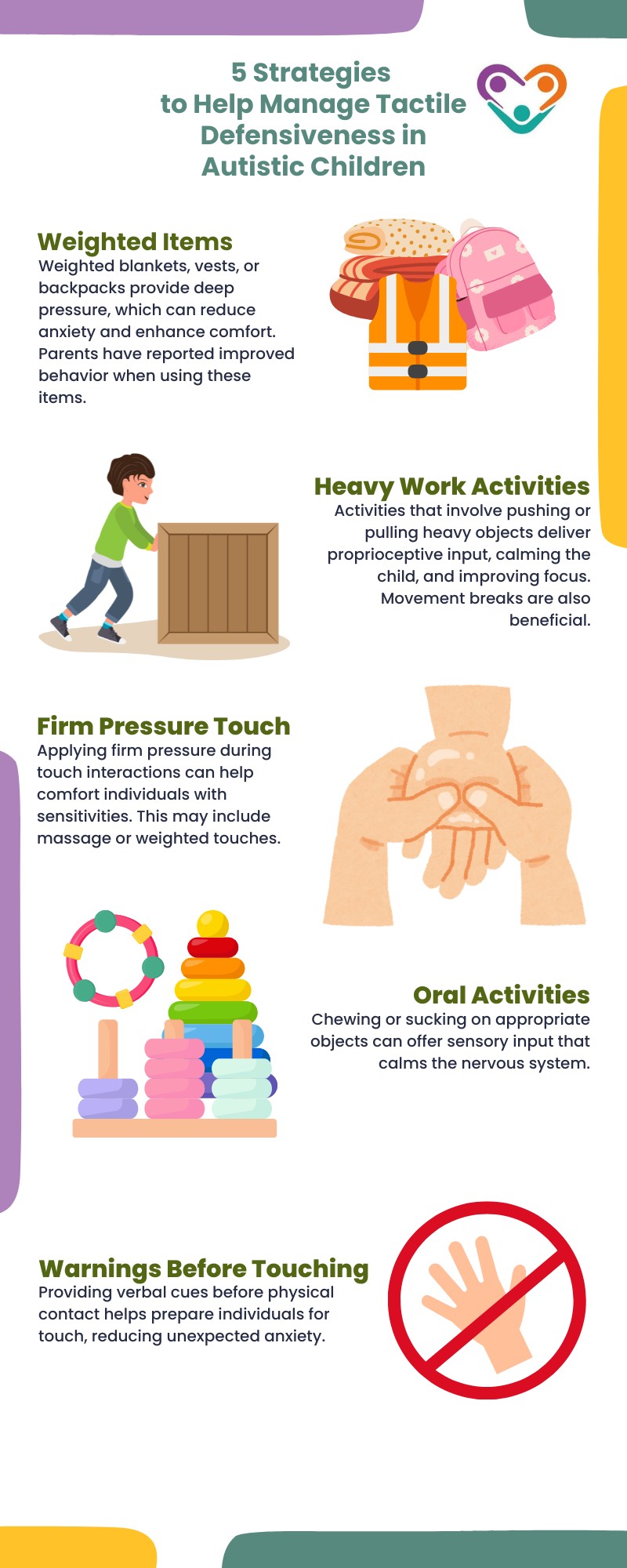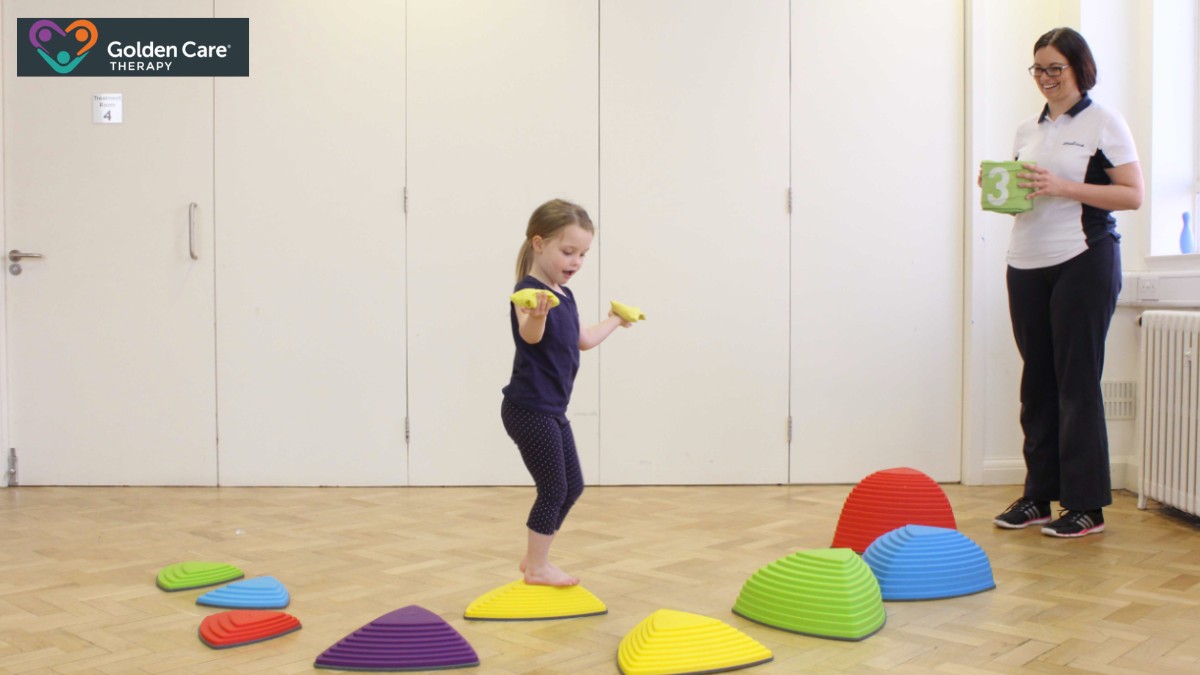Tactile defensiveness is a common but often misunderstood experience among individuals with autism. It refers to an increased tactile sensitivity that can make everyday sensations feel overwhelming or distressing.
For many autistic individuals, however, this heightened touch response can affect their comfort, behavior, and ability to engage in daily activities. As such, understanding tactile defensiveness is an important step in creating more supportive environments, both at home and in the community.
Impact of Tactile Defensiveness on Autistic Individuals
Tactile defensiveness can significantly influence the daily lives of individuals with autism. The two primary areas impacted by tactile sensitivities are stress and anxiety responses, as well as behavioral coping mechanisms.
Stress and Anxiety Responses
Individuals with tactile defensiveness often experience overwhelming sensations as their brains mistakenly interpret non-threatening touch as a serious threat. This misinterpretation can lead to elevated stress and anxiety levels.
The sensory overload may trigger a fight or flight response, causing the body to react defensively against what it perceives as harmful stimuli.
Common manifestations of stress and anxiety due to tactile defensiveness include:
- Intense emotional outbursts triggered by sensory discomfort.
- Steering clear of situations or environments perceived as threatening due to touch.
- Conflicts that arise from difficulty understanding or addressing tactile sensations.
Behavioral Coping Mechanisms
To manage the overwhelming sensations caused by tactile defensiveness, individuals may develop various behavioral coping mechanisms. These behaviors are ways to cope with or minimize discomfort and can include:
- Actions such as hand-flapping or body-gazing that provide sensory stimulation.
- Fidgeting with items or engaging in repetitive actions.
- Using weighted items like weighted lap pads or blankets to provide calming deep pressure.
Research indicates that tactile defensiveness often coexists with other sensory processing challenges, such as sound sensitivity or oral sensory seeking behaviors. This overlap further complicates how individuals experience and respond to their environments.
Weighted items, such as blankets or vests, can offer deep pressure, helping calm tactile defensiveness. Many parents have reported positive outcomes when using these tools, noting increased calmness and improved behavior in their children.
Understanding the impact of tactile defensiveness is essential for parents and caregivers, helping them recognize and respond to the challenges faced by individuals with autism.
This knowledge can guide them in providing effective support and interventions tailored to their loved ones’ unique sensory needs.
Identifying and Managing Triggers
Recognizing and managing triggers of tactile defensiveness is crucial for helping individuals with autism navigate their sensory challenges. By addressing these sensory sensitivities, parents and caregivers can significantly improve the quality of life for those affected.
Tactile sensitivities can be overwhelming for individuals experiencing tactile defensiveness. Their brains often misinterpret non-threatening sensations as serious threats, leading to heightened stress and anxiety.
This response may activate a fight or flight mode, as the body senses the need to protect itself from perceived threats.
Identifying specific triggers can be instrumental in managing these responses. Common tactile sensitivities may include:
- Textures: Certain fabrics like wool or tags on clothing may provoke discomfort.
- Temperature: Extremes in temperature, such as hot or cold surfaces, can cause distress.
- Light Touch: Unwanted or unexpected touch from others may be perceived as overwhelming.
- Messy Substances: Substances like mud, sand, or paint may trigger negative reactions.
By paying attention to behavioral responses, caregivers can identify triggers and work to minimize or avoid these situations.
To assist children in managing tactile defensiveness, employing various techniques to reduce stress is effective. Here are some strategies to consider:

These techniques can empower individuals with tactile defensiveness, allowing for more comfortable interactions with their environment and ultimately promoting a better, more fulfilling experience.
When to Seek Professional Support
Occupational therapists play a crucial role in supporting individuals who experience tactile defensiveness, particularly those with autism. Although tactile defensiveness is not a formal diagnosis, it often accompanies conditions like autism or Asperger’s. OTs provide evaluations through questionnaires and observations to determine whether a person experiences tactile defensiveness.
Moreover, OTs work closely with parents, caregivers, and individuals to develop tailored intervention strategies to improve sensory integration. They assess the specific sensory needs of the person and recommend activities and tools that can enhance the individual’s ability to cope with tactile sensitivities.
These professionals are instrumental in educating families about sensory challenges and the importance of creating supportive environments.
That said, assessing tactile defensiveness involves a comprehensive evaluation process. This may include things like questionnaires, sensory profiles, and observational assessments.
Based on the evaluation, occupational therapists may recommend a variety of intervention approaches to help manage tactile defensiveness, such as:
- Weighted Products: These provide calming deep pressure, helping individuals feel more secure.
- Oral Activities: Chewing, sucking, and other oral motor activities can be soothing and help regulate sensory input.
- Firm Pressure Touch: Utilizing firm touch can reduce sensitivity and provide comfort during interactions.
- Warning Before Touching: Preparing individuals for physical contact can help alleviate unexpected anxiety or fear related to touch.
These strategies aim to foster better sensory integration and improve overall well-being for individuals facing tactile defensiveness in autism. For more insight on managing sensory challenges, check out Supporting Kids with Autism When Loud Noises Become Overwhelming, which offers practical approaches to help children cope with auditory sensitivities.

Final Thoughts
Tactile defensiveness is a powerful sensory experience that can deeply affect the daily lives of individuals with autism. From overwhelming stress responses to unique coping behaviors, these touch sensitivities shape how someone interacts with the world.
Understanding tactile defensiveness is not just about managing discomfort, as it’s also about helping autistic individuals feel safe, understood, and empowered in their everyday lives.
We at Golden Care Therapy create personalized, compassionate ABA therapy plans that truly reflect each child’s unique needs. We proudly provide high-quality autism services in New Jersey, Indiana, New York, Georgia, and Florida to ensure families across these states have access to experienced professionals who genuinely care. Our team focuses on meaningful progress through evidence-based strategies, and we stay closely connected with families every step of the way. Contact us now if you’re looking for dedicated support that prioritizes your child’s growth and comfort.
Sources:



